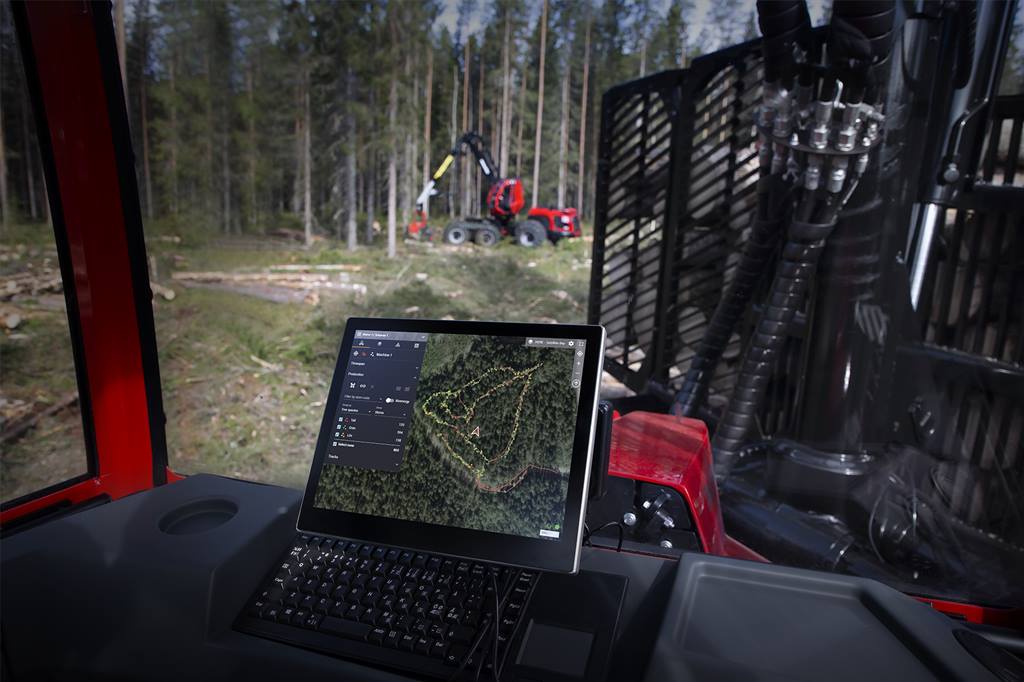With MaxiVision, the operator can combine maps of the area with the latest data on ground conditions into a single image and, at the same time, see both the own production data and that of the colleagues – all updated in real time. The work overview is a great tool for planning production and enables the operator to make well-founded decisions. MaxiVision also allows for effective collaboration between harvesters and forwarders as each team member can see what their colleagues are doing.
In practical terms, this means that the harvester operator can simplify matters for the forwarder operator by – for example, planning suitable access roads, log roads and landings to match the prevailing conditions. In turn, the forwarder operator can see the production in each working zone making it easier to optimise the forwarding process and avoid unnecessary detours. The operator can mark the zone complete once the timber has been forwarded to the landing making follow-ups easier. Once the timber has been forwarded to the landing the operator can mark the zone complete, making follow-ups easier.
The MaxiVision service not only offers team members a good overview of each other’s work, but also helps to facilitate communication between operators. By sending messages to each other or marking particular areas on the map collaboration can be improved and the outcome likewise. This unmatched integration between harvester and forwarder provides an optimised workflow and increased productivity.
The map combined with different data layers provides valuable information about current ground conditions in the area where the forestry takes place. The knowledge gained from MaxiVision allows for felling and forwarding with less impact on the forest ground, which not only increases the quality of the work, but also helps to meet demands for minimal ground damage. This means long-term sustainability.
View your work with new eyes – Komatsu Forest launches new digital tool that helps visualise the work in the forest

Press release
June 04, 2019
MaxiVision is a completely new digital tool that helps the forest machine operator to visualise the state and conditions of the forest. Different map views provide the operator with data about ground conditions and the rest of the team’s production, making it possible to plan the work as efficiently as possible and with minimal forest impact. Since everything is cloudbased, updates occur in real time and any changes are immediately seen onscreen in the cab.
